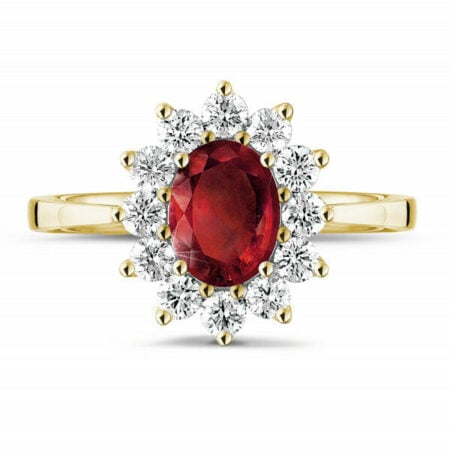Rubies are the world’s second rarest gemstones after diamonds. This intense red stone has enjoyed uninterrupted fame for centuries and is a symbol of love and passion. High quality rubies are therefore highly sought-after by collectors or private buyers. However, selling rubies at a healthy profit requires a thorough knowledge of this specific segment of the market. In this article we will clarify how to sell your rubies and what factors to take into account.

How to sell rubies at a profit
16 Jul 21Why invest in rubies?
In the same way as coloured diamonds, gemstones such as rubies, emeralds and sapphires are considered a niche market. While colourless diamonds are used for commercial purposes and are known for their high demand and good supply, coloured diamonds and other precious stones are quite the opposite. Because of their scarcity, investing in this type of gemstone is not always an obvious choice but it can pay off in the long term - with professional guidance from an expert who is completely at ease in this niche market. Furthermore, there is also a general trend noticeable in the precious stones market, an interest in coloured gemstones is on the rise.
When should you sell your rubies and to whom?
If you have invested in rubies or diamonds or perhaps you have inherited jewellery containing one or more rubies, you might want to explore the option of selling them. Of course, you can sell your rubies at any point in time. However, often it’s worth holding onto your gemstones, depending on their value.
Precious stones are natural product and their supply is running out over a period of time, however, despite their scarcity the demand is increasing. Pink diamonds are a good example of this trend, as there is just one mine that accounts for 90% of the worldwide pink diamond production, called the Argyle mine in Australia. This mine closed in November 2020, because the reserves had run out. The interest in pink diamonds is going through the roof and not all of them have been sold at auction. In a recent article in the Financial Times this information was confirmed.
There are various ways of selling rubies. For example, approaching a jeweller selling the precious stones via an online auction. Despite being an easy way of selling, this doesn’t mean it’s the most profitable option. Rare rubies and other gemstones have a niche audience which is not always easy to reach if you don’t have the knowledge and the access to their field. People interested in these kinds of gemstones tend to be private buyers, collectors or specialist dealers and they usually buy the rare gemstones through auction houses some of which are only open by invitation only to a selected audience.
What price should you sell your rubies for?
If you are planning on selling your ruby jewellery or loose rubies, you will naturally aim to receive the best price for them. The price per carat for rubies is one of the highest among the coloured gemstones and it’s just on second place after diamonds. Ultimately, the price you can achieve for your rubies depends on several factors.
Firstly, the 4 Cs e.g. cut, colour, clarity and carat play a crucial role in the pricing and valuation of rubies. However, if compared to colourless diamonds where clarity is usually the crucial factor, in the case of rubies the most important element usually is colour. Rubies come in various shades of red ranging from pink to deep red and reddish brown. The deep red hue is also referred to by connoisseurs as the red colour of pigeon blood and these are also the most expensive rubies. To accurately estimate the value of your ruby, you will need to obtain a certificate also known as a Coloured Stone Report which is issued by a reliable laboratory. Selling gems without a certificate is almost always less favourable, because the exact value is unknown, and you are therefore depending on the opinion of the potential buyer.

A second aspect which determines the value of your ruby is the current economic climate. Whereas external influences such as economics, politics and climate have a major effect on the price of commercial colourless diamonds, this is less so for coloured diamonds and very rare precious stones. However, this influence is not entirely negligible. For instance, it’s advisable to wait until the financial climate improves before selling your gems.
Nevertheless, you shouldn’t underestimate the original price you have paid for your jewel if the price was expensive to begin with in relation to the value of the gemstone, it’s more likely to gain less (or not to make any profit) when reselling it.
BNT Diamonds as your partner to sell your gems
To avoid such scenarios, at BNT Diamonds we always purchase gemstones directly from the source and we never work with intermediaries. Our customers can, therefore, always be assured of getting the best price-quality ratio.

